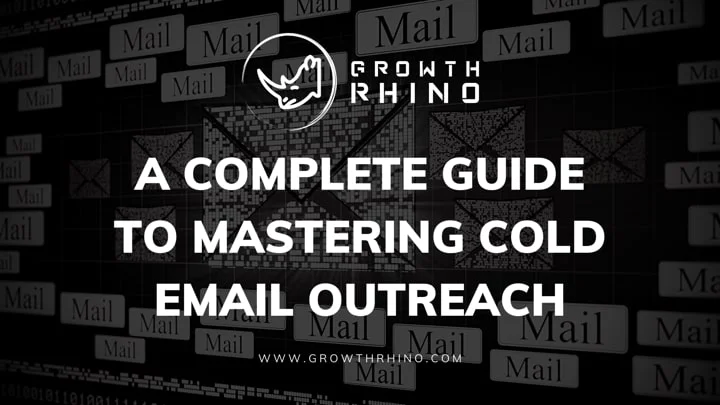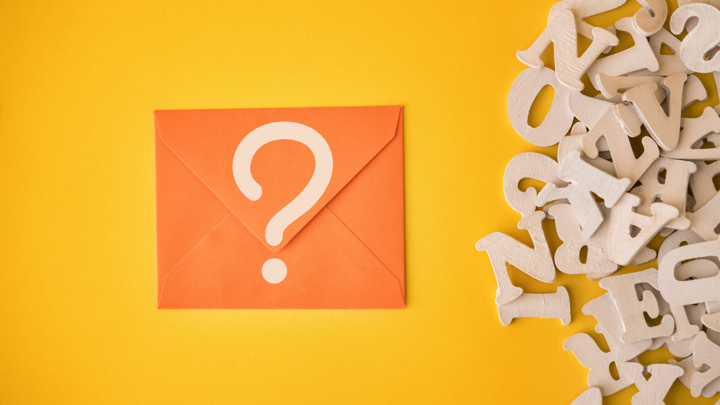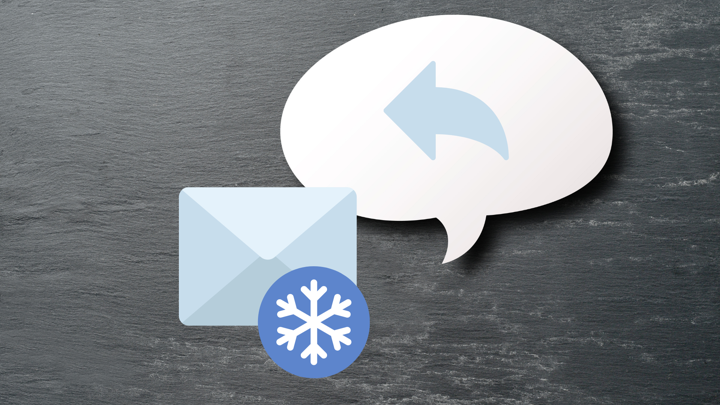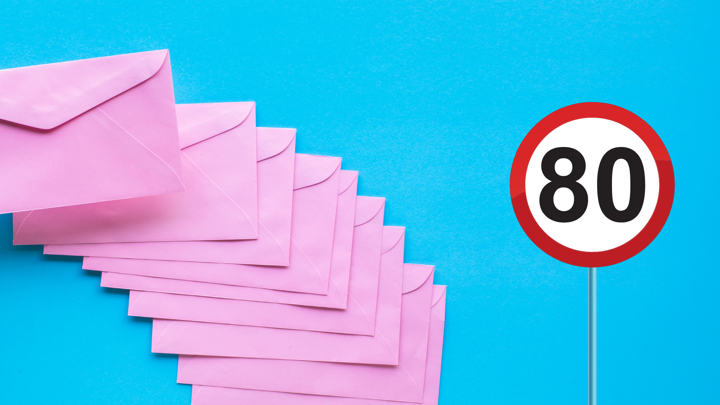
Cold email marketing is the most effective way to generate new and verified leads and help land more sales through outreach campaigns. Overusing this strategy might lead to penalties, but the right techniques can help unleash its full outreach potential. As in building a successful blog or social media following, where there are specific guidelines to observe on which blog post to write, which image to use, or when to post, there is also a certain science to writing cold emails.
In this article, we will discuss ways to make your cold email campaigns a success and help you increase the response rates from your customers.
To design the entire campaign from scratch, the cold email’s subject lines, template, opening line, communication style, and even delivery time must be perfect. Statistics reveal that a good subject line containing the name of the targeted person helps the open rate increase by 22.2%. The open rates can grow to 49% if the emails are A/B tested. This is how the winning formula is designed and implemented.
What Is a Cold Email?
A cold email is an email sent to individuals and prospect customers not yet known to the business. Hence, “cold” is used because there has been a lack of warmth or formal introduction with the email recipients. The first cold email is sent as a mode of icebreaker and to initiate conversations with them. Cold email strategies are very commonly used when sales need to take place across different industries. The concept of cold emailing goes much beyond sales and has penetrated the product service needs of link-building, networking, recruiting, and others.

Is Cold Email Spam?
People have always been confusing cold emails as spam emails. For the most part, they are not. They are an excellent opportunity for businesses to communicate effectively with their prospects and help gain possible sales. Today, B2B cold emails have emerged to become personalized advertisements and promotions from companies to have a focused outreach. The most significant difference between bulk spammy emails and cold emails is personalization, which helps attract recipients to know more about the product or service. There are a few Federal Trade Commission rules that need to be followed to keep from landing in the spam boxes. Make it a point to observe the following guidelines.
- The email needs to bear clear information about the organization’s identity, such as the company name, and have the “From,” “To,” and “Reply-To” details.
- The subject lines cannot be misleading in any way.
- The email should be labeled clearly if it bears any offer or advertisement.
- Aside from the company name, the organization’s address must also be mandatorily added to the email. Project the image that your organization is credible and trustworthy.
- The email must have access to the “Unsubscribe” option.
- The recipients must also be given the benefit of voluntarily opt-outs in the future.
- Your business must closely keep an eye on the content that is being sent out. This helps the credibility image of your business.
Why You Should Use Cold Emails
The cold email outreach strategies come with much more benefits than you would anticipate. You can pick a point or two from the following highlighted benefits of cold emailing:
Higher reach of new prospects:
Cold emailing helps you go beyond your stipulated customer base and initiate contact with a larger pool of prospect customers. More than increasing your leads, cold emails also help you build brand awareness and convert larger sales. Cold emailing into untapped markets is the best avenue to spread the word of your brand and land into sales.
Less intrusive than cold-calling:
Cold emailing is not annoying and helps you give the required privacy and space to the prospects. Sending a digital message will enable the recipient to read it at their convenience. It also enables you to establish a good impression as a brand. In effect, you are putting your services out there without demanding so much of your audience’s time for immediate contact.
Highly scalable and inexpensive approach:
The cost of sending email is almost null, and by using the right cold email tools, you can send thousands of messages at once. This is a much more practical and effective way than doing a cold call, which was the old, traditional way to get in contact with untapped leads. This lowers the effort, takes much less time, and the requires little funds. The results will be visible instantly, and hence, this technique has the highest ROI today.
7 Steps to Effective Implementation of Cold Email Strategy
Hitting the bull’s-eye of cold emailing is the easiest thing to do if you follow the 7 steps mentioned below.

Revolve around the prospect:
The best cold emails are the ones that are inclined toward their prospects and not the glory of their own product or service. These emails are not the place to discuss your organization’s achievements and their feats. (You can use your website or a blog post for that.) Only a formal introduction is a good way to start through. Talking more about the prospect in the mail, their profession, industry, interests, and preferences, would help the business build greater trust and break the ice. It is important for them to know how your service or product is going to benefit their lives and help them get better.
Do not be too sales-y:
It is not ideal to right away jump into selling. The first couple of emails should be where the prospect can feel free to contact you right away without hesitating. Gradual follow-up emails can hold the idea of your pitch. With your follow-ups, show your audience an image of credibility and commitment. Carry this image that you are committing to help solve their problems without focusing on selling your product or service. Steady, sincere emails have the best response rates.
Be attentive to the subject line as well as the message:
Pouring all the attention to the cold email subject lines is not enough; you must focus on the entire email. But it is also a fact that 35% of the leads open emails based on the subject lines. But as the targeted emails have a result of getting opened in higher numbers than average, we suggest you focus on the overall email composition However, the email’s main message works differently for different industries, and the company should run some tests to know which works the best. It is best not to blindly follow others’ examples. Just make it clear in your subject that you can provide potential value to your recipient. And when you write that first message, take your time and be as intentional as you would when writing a blog article that you are passionate about.
Research well on target prospects:
Researching about the target audience is an integral part of the entire cold email marketing strategy. There are chances of the prospect becoming your customer, and the better you know them the easier it is to establish a finer relationship. This would assure the prospect how much effort you have put in them and increase their interest in knowing more about your offer.

Be respectful when replying:
Receiving replies to your emails is very exciting until you become cold again in responding to them. If you receive a prospect’s response, you must be more diligent in delivering a good, warm, respectful personalized reply message to not miss the deal. Rushing into replying to prospects is not a very intelligent approach. Instead, you must take your time to respond and give the prospect enough time to process the conversation in a natural flow. Keep in mind that you are talking to a human being. This is not like a social media post or a blog article that you can put out there and leave, without having to engage again. When you send out your first email, you are attempting to start a conversation. So when they respond, try your best to empathize, relate to them, and address the pain point that they came to you about.
Personalize the cold outreach:
Add a personal touch to your cold sales email template for a better reach. Did you know that personalized cold email writing can increase the reply rates by 100%? Write recipients’ names in the emails or have some information about their professional or sports interest. Make it clear in your first message that you have something valuable to offer to them specifically. Address your potential customer’s pain points. Sales emails do not have to be literally "cold" and emotionless. A good cold email is not only a sales email but an email that reaches out to your customers’ needs. You can reach the right person when, first and foremost, you get down to offering a solution to a specific problem. This is how your cold emails win.
Add value to prospects:
The cold email strategies might fail despite how superior your offer is. Unless the emails can make the prospects realize how beneficial those offerings are for them, they will not be converting. The emails are successful only when they can deliver the value that the prospects are looking for. To ensure you communicate the proper value proposition, try to ask these questions before you send out the first cold email:
- What do they need from you and your business? What can you provide for them?
- What problems are you solving? What pain points are you addressing? Giving attention to the specific pain points of your target prospects can cement your value proposition.
- Do you have social proof (for example, reviews, testimonials, past clientele) that verify that your product or service is really helpful?
How to Set Up a Cold Email Marketing Strategy
Here is a 9-step chart listed to improve your cold email lead generation procedure. This guide will be walking you through the entire process, point by point, and show you how to set up the right email marketing strategy.
Setting up cold email outreach signature, profile, and provider:
This is the first step to ensure your emails do actually land into your recipients’ inbox folders. For that, you need to choose between the two types of email providers: paid providers (like G-Suite) and free providers (like Hotmail and Gmail). Choosing paid providers also helps because emails from corporate domains are much more trustworthy and pull the mail’s deliverability to greater extents.
The next essential step in your cold email outreach campaign has to be how you set up the company profile. Basic information like a real name, a real image, and real details about the company must be present in the profile. You must also have an email signature attached to it, which shall be uniform across every communication from your end.
Cold email vs spam emails:
There are filters incorporated that prevent the complete email deliverability of every cold email. To avoid getting trapped, here are few tactics listed.
- Emails can be run through email authentication by SPF and DKIM. They would ensure that your organization and not somebody else is sending the emails.
- SPF (or Sender Policy Framework) verifies the sender’s IP address.
- DKIM (or DomainKeys Identified Mail) verifies the email ownership.
Emails getting into the spam folder can also be prevented if the email addresses are warmed up. Warmed-up email addresses indicate that the profile has been actively sending and receiving emails like a real person would do. You can also do this through cold email automation tools you can find on the web. Your profile’s bounce rates can be improved when you constantly monitor and clean your email lists. The lesser the number of inactive users, the lesser will be the hard bounces of your emails. This in return improves the sender’s reputation.
Building verified cold email lists:
Building the right list is all about finding the right audience who would respond ideally to the emails. For that, creating an ideal customer profile is necessary. Sending emails to the required target audience would be called relevant and good emailing, while sending it in bulk would be termed spamming. You can use email-finding tools to understand whom to include in your email list.
The emails can be scraped through trustworthy sources and maintained in a well-formatted CSV file. The list then must be monitored regularly to remove inactive or unresponsive emails.
Writing emails that get responses:
Cold emailing that actually receive responses is no rocket science. It is a very simple formula that indicates maintaining high authenticity. This can be done by connecting the sender’s address with the email account. The next step would be writing that perfect email.
When you are writing that first email, remember that your opening line can either make or break your business. Most people do not read beyond the first sentence if they do not immediately see something of value. Write a compelling opening line. Equally as important, write a closing that is just as compelling as your opening spiel. A call to action can go a long way in soliciting responses from your audience.

There are multiple cold email templates available, or you can directly write the emails from scratch. Keep in mind that the subject line should be the highlight of the campaign. Any tricky words or overused spiels can drive the mail into the spam box. The ideal way out of this is to personalize the cold email subject lines by adding details that will provide value to the recipient. Following that will be the introductory lines, and this is where the recipient’s attention is drawn. The prospect, based on this line, will either continue reading or skip it altogether.
The outreach email can be personalized to the next best level by addressing the recipient’s first name. Statistics reveal that this simple approach increases the reply rate to about 91%.
A/B testing the cold emails:
To increase the cold email outreach, businesses try almost everything. If your agency has also done the same and is unsure about the results, then this is the best time to run an A/B test. A/B testing can inform you about specific stats, for example the following:
- Email deliverability
- Open rates of emails
- Usage of personalized images and videos in the emails
- Reply rate of the emails
After knowing the data, how would you A/B test the emails? You can run A/B tests to understand which email has the higher chance of getting opened. For example, you can try the following:
- Subject line variability
- Inserting questions in the subject line
- Choosing different times to send emails
- Choosing different days to send emails
- Choosing to use just lowercase in the subject line
- Using power words in the subject line
- Using emojis in the subject line
The data derived from the tests can help you understand what the cold email best practices are for your organization.
Sending follow-up emails to get responses:
It is not mandatory that every email should receive a response. But if multiple emails are not drawing the recipients’ attention, then there must be something done to get the responses, such as sending follow-ups. You must send follow-up emails following the initial email. However, the right time span must be maintained between the two emails. There is a framework put to use to understand the time span:
- Email 1 and 2 must follow a 2-day gap.
- Email 2 and 3 must follow a 3-day gap.
- Email 3 and 4 must follow a 4-day gap.
You should send only four follow-up emails if the campaign is a sales-oriented one. If it is partnership-oriented, only two follow-up emails should be enough. More follow-up emails would make you seem pushy, and healthy relationships won’t be built over emails. Some businesses are settled over the phone or physical meetings. If you can get your customer to give you another contact information, such as a phone number, to contact them with to set a meeting, then your campaign has been effective. Nonetheless, you can be assured that the above-listed framework will increase your reply rate and scale it to get tripled.
Best Email Prospecting Tactics
Cold outreach campaigns involve using specific prebuilt templates with predetermined strategies in them. However, good emails can be created using short and attention-grabbing sentences that ignite instant responses from the recipients. Read below to know more about how to best engage the target prospects.
Personalized video strategies:
This is the first-level icebreaker for your recipient. With the inclusion of this strategy, you can instantly grab their attention. This also increases the interaction between you and the prospect.
Coffee meeting strategies:
Using this template, you can genuinely compliment their prospects and not flatter unnecessarily. The message can be both funny and kind at the same time. This template builds genuine relationships and long-term trust.
Sending emails in bulk:
Cold emailing in bulk without personalization is a very wrong approach and can tarnish the company’s reputation in a blast. The email numbers must have limits. If the email is new, sending 70-80 emails a day is a good and acceptable number. If the address is old, you can easily send 100-120 emails a day.

Building advanced sales workflows:
Building advanced sales workflow is important to have a more focused cold email outreach. Google Sheets, Slack, and CRM are the best integrations available. These integrations can automate the data management and email activities besides others. These also look into managing multiple email replies through CRM integration. As a result, every reply is personalized, and you do not need to individually check into the activities.
What Is a Good Open rate for Cold Email?
Cold outreach campaigns are considered good if they have 50% open rates. The numbers cannot be compromised, and anything below 50% means that the campaigns need to get modified. If there are issues of email deliverability, they must be fixed right away.

What Is the Average Cold Email Response Rate?
The average cold email response rate generally floats around 8%. But well-targeted, well-researched, and focused outbound campaigns can also bring you 20% response rates. About 40 responses in a list of 200 is a great way to push-start the campaigns.
What Are Good Conversion Metrics for Cold Emails?
A cold email is considered good if it hits a conversion metric of 10%. For example, if 10 meetings are booked from 100 sent emails, the figures become a reliable head-start. This goal is universal for any industry and field you belong to.
What is the Best Time to Send a Cold Email?
According to research, there is a high chance of success when the email is sent at a working hour. When the emails are sent around 11 AM and 1 PM, the success and replying rates are significantly high. The study says around 45,000 replies were recorded when the email was sent at 11 AM. Again, a whopping 46,000 replies were recorded when the emails were sent at 1 PM. Early in the morning is also a good time as the emails will reach the targeted inbox before they get into the office, resulting in high opening and reply rates.
However, the same study also mentioned that 8 PM to 7 PM is the worst time to send a cold email. Since the work hours usually come to an end at that time, the chances of getting a positive reply or even a reply are quite low. Furthermore, Monday and Tuesday were found to be the most effective days of the week to send the email since productivity at the beginning of the week is at its peak.
How Long is a Cold Email?
Ideally, a cold email should not span more than 150 words. Opening and subsequent success rates for these emails are nearly 60% and the response rate is tracked at almost 50%. Anything longer than this can be boring and unattractive. Anything shorter than that does not explain the required points in much detail, which is crucial.
11 Cold Emailing Mistakes to Avoid:
1) Sending Your Cold Email to a Wrong Person:
Before sending a cold email for sales, thoroughly analyze the recipient list. Keep in mind that sending these emails to the right and the relevant audience is very important. If you send a cold email to the wrong person who is in no way related to it or has no interest in it, you may disappoint that person. Chances are high that they would block you and accept no more emails from you if you waste their time sending irrelevant emails.
2) Using Unclear Subject Lines:
The cold email subject lines are the most important thing in a cold email. It is the main part and the first thing a recipient notices when they receive your email. Screwing up the subject line can cost you the whole deal. Hence, consider writing a subject line that has some attention-seeking features and something that intrigues the recipient. Again, spamming the subject line with irrelevant issues can be disturbing for the reader.
3) Not Using Email Templates:
A lot of marketers do not use verified email templates while sending out a cold email. This can be a costly mistake. Using a verified email template ensures that the email you send stays in place and maintains a consistent tone. More often than not, if you try to write an outreach mail on your own, you will divert away from the professionalism and mess the whole thing up.
4) Not Focusing on the Call to Action:
A cold email without a CTA or Call to Action can be quite meaningless and confusing for the recipient. A Call to Action pulls a clear line to what the email means and provides some further steps to the recipient. Sending just the email can put the reader off. Hence, consider eliminating all unnecessary content and include things that make the recipient take an action.
5) Not Reading the Audience:
For a successful outreach campaign, you must mix up with the audience. By mixing it means that you need to communicate more, find their interests, and know what all are important to them. This information can be then used to craft a proper and dedicated outreach email along with highlighting their issues. This builds a professional bond and the chances of conversion go up significantly.
6) You are Being too Self-Promotional:
One of the common email mistakes that salespeople and marketers usually make is they promote themselves too much. In most cases, prospects need minimal and basic information about you and your company. If you brag too much about yourself, you will turn them off and lose the chance of a conversion.
7) Not Segmenting and Customizing Your Template:
When you use a particular email template to create an email, do not blindly copy the whole thing. Segment various topics within your email and customize every bit of it. You can use the structure from the template but consider customizing the whole content within it. This shows your creativeness and opens up the receiver's interest.
8) Writing too Long Emails:
Writing lengthy emails with the aim to attract the recipient is not a very good idea. Keep your email as short and simple as possible. Explain all that you need in not more than two paragraphs. If you have a lot more in mind, consider writing it differently but keep your cold email short and precise for the reader to have interest in it.
9) Not Including Benefits:
Remember to include the general benefits of working with you and your company. Make sure that it is done in a short way. Including the benefits gives you a better base for convincing the prospect successfully.
10) Not Double-Checking Your Grammar:
Using wrong grammar can turn the reader off. It would indicate how immature you are as a writer and in no way help you crack the deal. Hence, always double-check the grammar with one of the many tools available on the web and thoroughly proofread the whole thing.
11) Not Using an Email Signature:
A cold email signature is a crucial part of every email you send. This is a stamp of verification from the sender and instills a thought of authenticity into the recipient. Missing out on the email signature can result in your email being ignored. Always remember to attach the signature for having better opening and reply rates.
Top Cold Email Outreach Tools That You Can Trust
Just applying the best strategies won’t bring the campaign success unless the right tools complement them. Here are a few tools listed that would also give you free trials before buying them.
Airborne:
This simple yet very effective tool always tops our list. It ensures multi-channel conversations, generating more leads in a very short period of time. The tool improves sending out cold emails with custom templates and quick personalization. Its enhanced deliverability feature and highly scalable cold email outreach prevents the sender from landing into spam. Further, the options like real-time reporting gives deep insight into overall email analytics, creating deep business impacts.
EmailAnalytics:
This tool is a great way to keep track of all the emails the business is sending out. Metrics like average email response time, numbers of sent emails, open rates, bounce rates, deliverability rate are all displayed on the analytics desk. This tool also helps coordinating cold email prospecting with the team conducting the campaigns. The team can then track their overall performance through this tool.
SmartReach:
This tool can be a highly preferred choice for businesses that are looking out for some added benefits as compared to other contemporary tools. The tool helps you get a detailed report on the spam tests, which helps in improving your email campaigns to a great extent. With quick and easy email list validation and email warm-ups, you are sure to reach the right prospects at the right time. The tool also ensures that the domains are custom tracked and its advanced personalization features make the emails appear like they’re human-sent.
Lemlist:
Lemlist is a tool that can promise the specialized and focused success of cold email campaigns. This tool has almost every feature that campaigners need. Features like campaign planning, AB testing, content generation, content dynamicity, built-in templates, and campaign reports have made the tool super popular.
AutoKlose:
This is an excellent outbound sales platform that has the all features required for a successful cold email campaign. Its advanced features help in efficient lead generation, drip email campaigning and CRM integration. You can also send bulk emails through your business account. Backed by sales intelligence and data, this amazing tool also prevents your emails from landing into the recipient’s spam boxes, thus, ensuring higher deliverability.
In this way, you can use the above-listed tools, strategies, tips, and ideas to design a successful and sound cold email campaign outreach strategy cohesively. This would help the company deliver the desired goals as planned. However, if you fail to receive expected results, the teams should focus on understanding what is going wrong from scratch. Performance metrics should be put to use to have a constant check on the progress. Using all the tools and strategies correctly will help the businesses have an in-depth visual analysis of the activities and work harder to improve them.
The success of your cold email outreach not only depends on how many tools and strategies you are using but also how well you are executing them to achieve the best results.
Most importantly, remember that your goal is to reach out to your prospects intentionally. Provide them answers, attempt to solve their problems, address their pain points, include a call to action. Although you are starting an outreach campaign, the message you want to convey is a personal one. As mentioned earlier, just like crafting a perfect social media ad post, you can also craft that perfect first cold email that will kick-start new ventures for you and your business.
